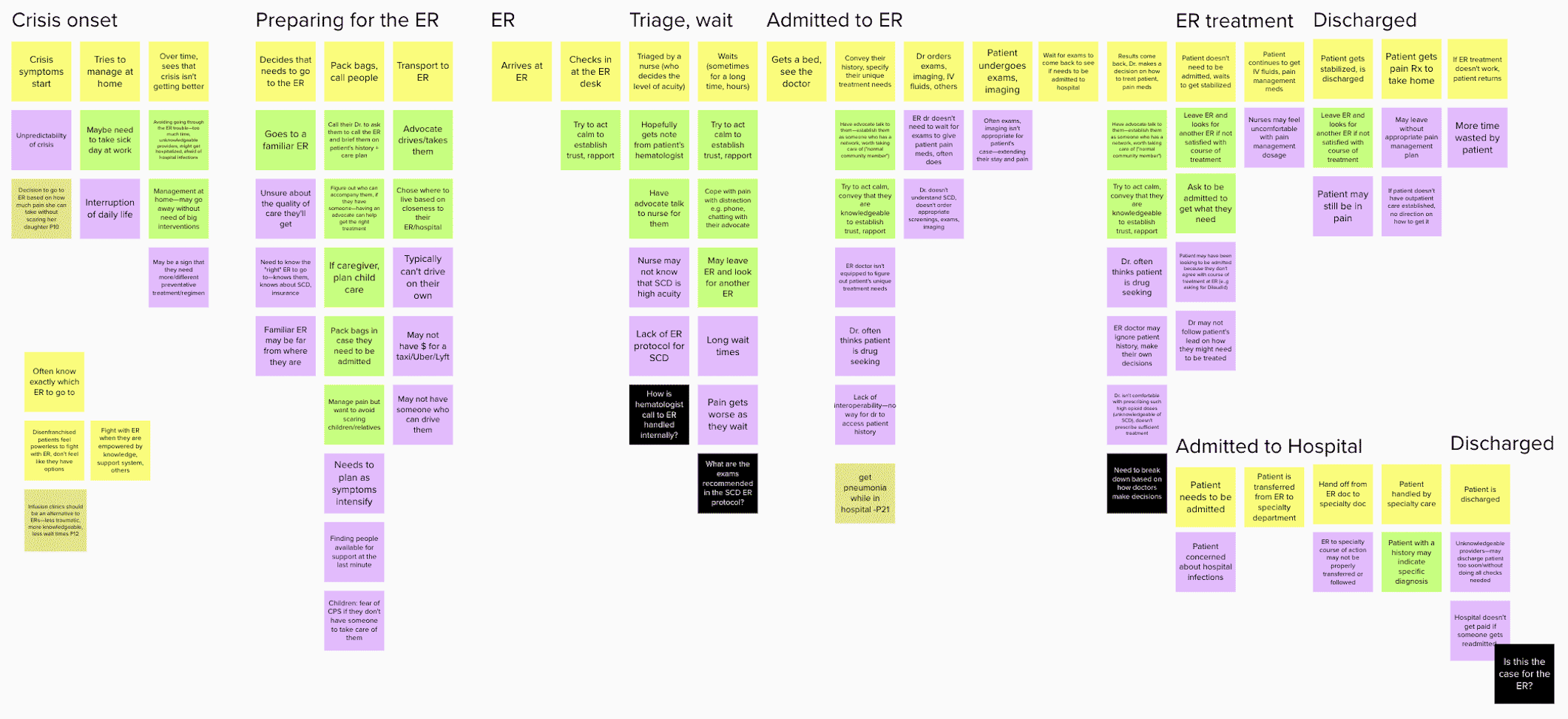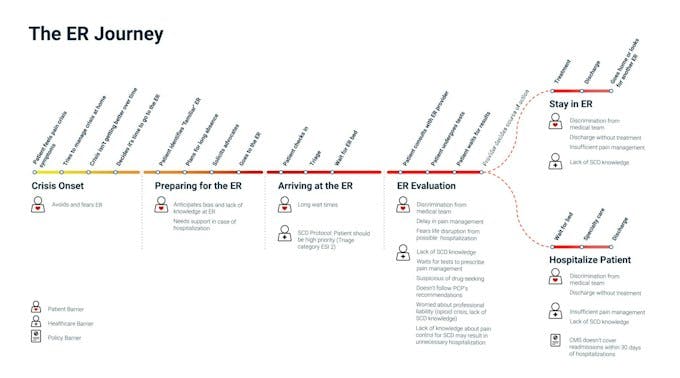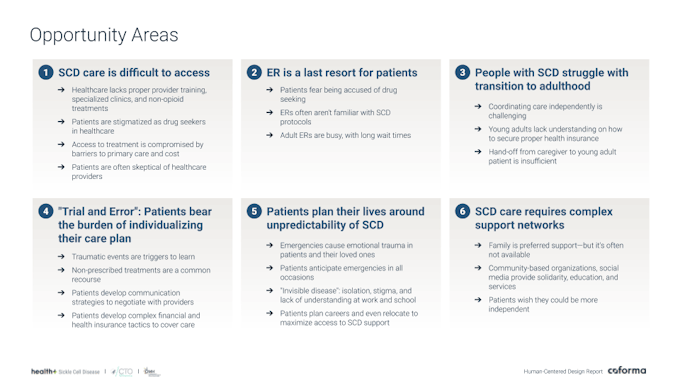The Challenge
- Client Name(s):
- Health and Human Services, Office of the Chief Technology Officer
- Partner Name(s):
- Pistis, Center for Open Data Enterprise (CODE)
- Delivery Date:
- September 30, 2020
To support people living with SCD, we sought to uncover areas where their needs aren't being met sufficiently.
SCD is the most common inherited blood disorder in the United States. The Health and Human Services’ Office of the Chief Technology Officer sought to respond to a nationwide demand for population-level SCD surveillance data and other data to support better treatments and healthcare options for people with SCD. They needed a partner to conduct several levels of patient-centered research, extract cross-discipline insights by cutting across work siloes, and create a platform to begin addressing the sickle cell community’s concerns. Coforma’s Health+ program was a perfect fit for the challenge at hand.












